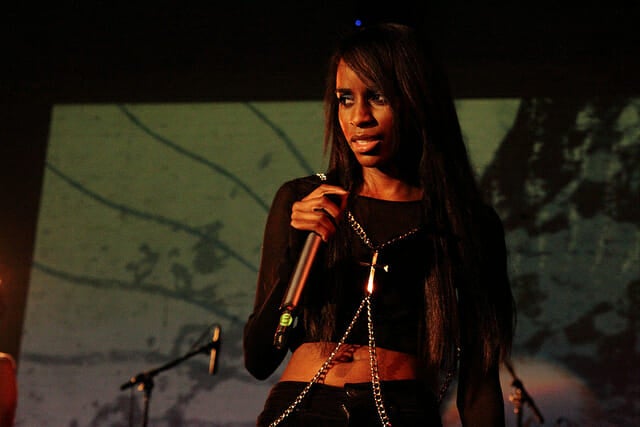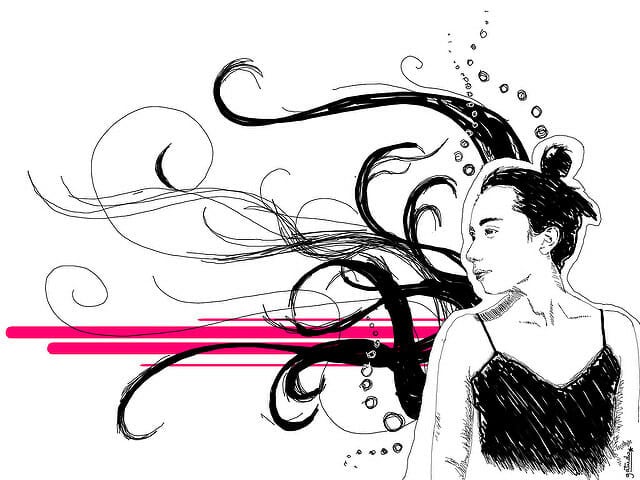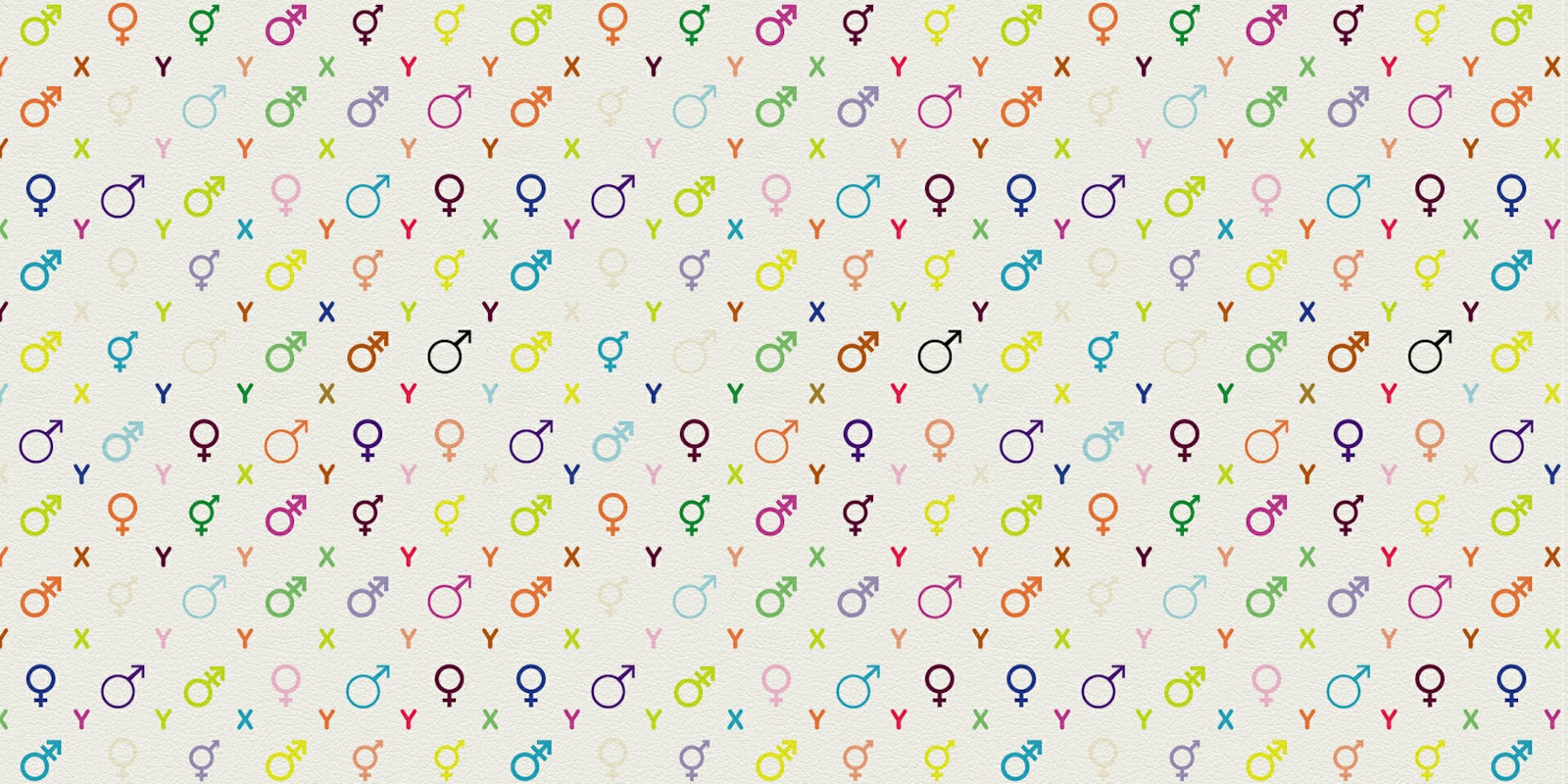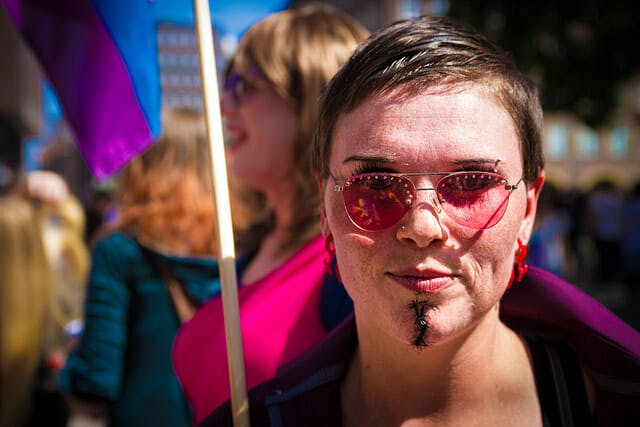Chances are you’ve probably heard about transgender rights, but do you know what it means to be nonbinary? In recent years, nonbinary people been more visible in media and cultural conversations than ever before, but many still live with little recognition. Others are stigmatized, by and large, often finding themselves attacked by transphobes and misogynists—especially nonbinary femmes.
Our understanding of gender identity, sexuality, fluidity, and queerness is changing, and that means more people are becoming aware of their gender identity outside of the gender binary every day. When it comes to being nonbinary, here’s what that means.
What is nonbinary?
There are several different definitions of nonbinary floating around, as each person has their own explanation of how they view their gender identity. Generally speaking, though, as the National Center for Transgender Equality points out, nonbinary is a term used to describe genders that don’t fall solely into the “male” or “female” categories.
“Some societies—like ours—tend to recognize just two genders, male and female. The idea that there are only two genders is sometimes called a ‘gender binary,’ because binary means ‘having two parts’ (male and female).”
Nonbinary definition
“Nonbinary” is generally used as an umbrella for various gender nonconforming identities—including being transgender. But while transgender falls under nonbinary, it doesn’t mean that all nonbinary identify as transgender. Some simply see themselves as nonbinary and nothing more. Different people may have different words or terms to describe themselves in relation to being nonbinary, too.

This is visually represented in the nonbinary flag. Created by Kye Rowan in 2014, the nonbinary flag features four stripes: yellow, white, purple, and black. Each color has its own meaning: Yellow for people who identify outside of the gender binary, white for nonbinary people with multiple genders, purple for those with a mixture of both male and female genders, and black for agender individuals.
What are some nonbinary gender identities?
Various nonbinary genders fall under the term’s umbrella, including gender identities that askew gender altogether. Since the nonbinary umbrella is the broadest, it can be confusing to understand individual preferences when it comes to more specific gender terminology. The Nonbinary Wiki is a great resource that contains an enormous list detailing various gender identities that are considered nonbinary.
Agender and bigender
One common gender identity, agender, refers to someone who has no gender identity or considers themselves gender-neutral. For instance, rapper Angel Haze identifies as agender. There’s also bigender, which describes people with two gender identities (typically both male and female). And there’s gender fluid, where a person experiences a fluctuation between gender identities.
N.B. or “Enby”
Many nonbinary individuals also use the term enby, which can be used when describing non-binary people. For example, a group of non-binary friends is a “group of enbies.” Or a nonbinary student in class is called an “enby student.”
Femme, Masc, and Butch
The classic queer terms “femme” and “butch” are often applied in the nonbinary community, too, with some non-binary individuals relating to the terms “femme,” “butch,” or “futch” within the gender expression spectrum. This lets nonbinary people identify with a certain gender expression or identify on a spectrum, as opposed to a rigid identity with gender roles and expectations.

READ MORE:
- The dirty, complex, empowering history of the word ‘queer’
- The pride and pitfalls in LGBTQ labels
- How big is the transgender population, really?
- 8 out and open transgender celebrities you should know about
Nonbinary pronouns
Nonbinary pronouns vary from person to person. Some prefer using “they/their” pronouns, while others use multiple pronouns (such as “she/her” along with “they/their,” or “he/him” along with “she/her”). Other non-binary people use specific pronouns that are vastly different from “she/her,” “they/their,” and “he/him.”
The Nonbinary Wiki documents some of these pronouns, as well as their history and conjugation. For instance, there are Spivak pronouns, which originally came from Michael Spivak’s The Joy of TeX and were later introduced into LambdaMOO, an early text-based internet community, in the early 1990s. Spivak uses “E,” “Em,” and “Eir” pronouns. An example sentence with Spivak pronouns would be, “E talked to Eir parents today.” Other common nonbinary pronouns include:
Hir: A femme pronoun, conjugates “hir/hirs”
Fae: Themed pronouns based on fairies, this pronoun conjugates with “fae/faer”
Xe and Zhe: Recorded as far back as 1972, this pronoun set conjugates similarly. Conjugates “xe/hir,” “xe/xir,” “xe/xyr,” “ze/hir,” and “zie/zir,” to name a few.
It: Some nonbinary people even use “it,” with standard English conjugation.
Is nonbinary the same as genderqueer?
Genderqueer and nonbinary identities overlap with one another in some ways, but the two terms aren’t necessarily interchangeable. In fact, using these terms interchangeably can be invalidating for both nonbinary and genderqueer people who don’t use both terms.
Genderqueer, as Genderqueer and Non-Binary Identities explains, represents a larger umbrella of gender expressions and presentations that are non-normative. This means genderqueer has more to do with gender expression over identity, as a genderqueer person may not identify as nonbinary or transgender, and their gender identity may align with their gender assigned at birth. They simply consider their gender expression or identity to be queering gender roles. For example, a “genderqueer man” may embrace femme gender expressions but he may still identify as a man.
Genderqueer is often nonbinary, in short. But not all nonbinary people may consider themselves genderqueer for a variety of reasons.
Nonbinary people see their gender identity as separate from the binary of “man” or “woman.” For them, identifying as nonbinary is entirely about their gender identity on the gender spectrum. It isn’t so much about expression as it is about their existence: how they think, feel, and look at that world. This mirrors some trans experiences, as some nonbinary people also experience gender dysphoria (the feeling that your gender does not match your sex assigned at birth).
READ MORE:
- What it means to be transgender
- The financial costs of an uninsured abortion
- 5 dating apps for queer women without any of the bulls**t
- The difference between being polyamorous and being sneaky
Am I nonbinary?
Much like identifying as transgender, being nonbinary is about self-identity. There’s no test online to prove if someone is (or isn’t) nonbinary, and there isn’t a perfect benchmark that proves whether someone is suffering from gender dysphoria in their current body.
Nonbinary people understand that there is an incongruence with their assigned gender and their actual gender identity, much like trans people understand that their gender assigned at birth isn’t their gender identity. But it takes time to figure out, which means a lot of soul-searching and self-reflection.

If you’re feeling dysphoric and think you may be nonbinary, Everyday Feminism suggests asking yourself some questions about your gender identity. For instance, do you feel comfortable being “perceived as a man or a woman,” or would you prefer to be seen as “androgynous, not assigned a gender at all, or allowed to move fluidly between genders?” Thinking about these issues can help you understand how you would prefer to express yourself.
From there, understanding what your gender identity is (and isn’t) is entirely up to your own sense of comfort. Does agender describe the way you feel about yourself? Then it might be the right identity for you. Do you think of yourself as part man and part woman? Then you should look into gender fluid nonbinary identities.
There’s no real way to rule whether someone is or isn’t nonbinary. It all comes down to self-identifying. So the best way to figure out if you’re nonbinary is to think hard about your gender and how you want to be seen by the outside world. And if that means being nonbinary, then it might just be the right identity for you.
Editor’s note: This article is regularly updated for relevance.



